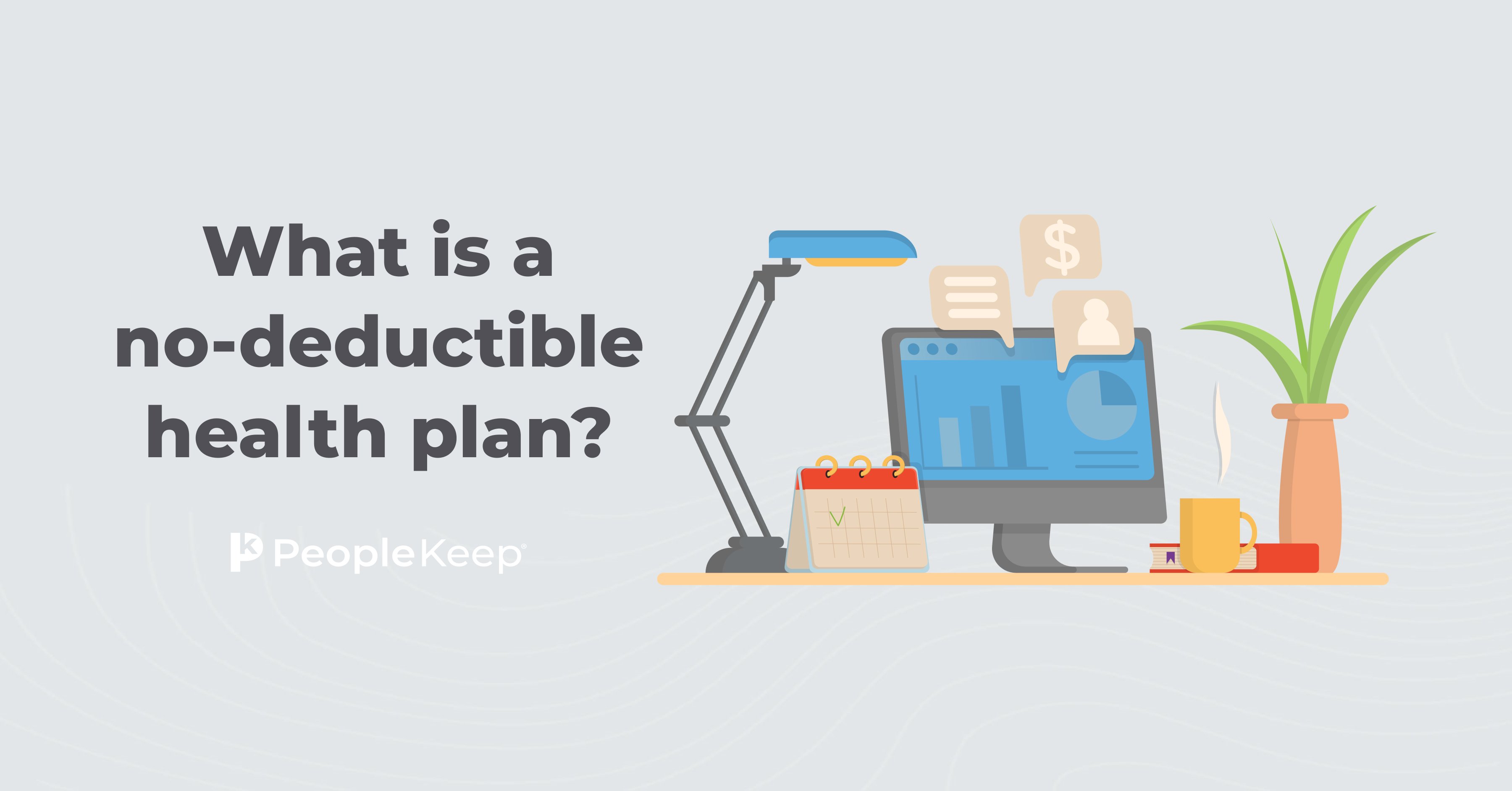What is a deductible?
By Chase Charaba on October 2, 2025 at 5:21 PM
Have you seen the term “deductible” when shopping for a health insurance plan, but aren't sure what it means? Understanding your health insurance deductible is crucial for effectively managing your medical finances. It will also help you make informed decisions when choosing a policy.
To help you learn what you need to know, we'll take a deep dive into what a deductible means for you and your family.
In this blog post, you’ll learn:
- What a deductible is, how it works, and its importance in managing health insurance costs.
- The different types of deductibles and how they affect out-of-pocket expenses.
- The differences between high and low deductible insurance plans and how to choose the right one based on your healthcare needs and budget.
What is a deductible, and how does it work?
A deductible is the amount of money a person with health coverage must pay out-of-pocket before their insurance company begins to cover the costs of medical care. Your insurance company typically determines your deductible on an annual basis. The amount can vary depending on the type of plan. For individual and small group health plans, it can also vary by the metallic tier you select.
For instance, if your health insurance plan has a $1,500 annual deductible, you'll pay $1,500 on your own first. Once you meet your deductible, the insurance company will pay a percentage of your medical costs for the rest of the plan year.
At this point, you won't have to pay for covered services on your own. However, you'll still be responsible for any copayments or coinsurance amounts until you reach your out-of-pocket maximum. Once you reach the maximum, your insurer will cover 100% of your covered medical claims.
A copay is a fixed amount you pay for a medical treatment, such as $20 for a physician visit. Coinsurance is a percentage of costs that you pay after meeting your deductible. For example, 20% of prescription drug costs. You’ll want to review your plan details to see your copay and coinsurance details.
Why is understanding deductibles important?
Understanding deductibles is key to choosing the right health insurance coverage when considering your financial situation. For example, generally, the higher the deductible, the lower the monthly premium, and vice versa. It's vital to remember this when shopping for individual health insurance on a public or private health exchange to get the best bang for your buck.
Additionally, insurance deductibles significantly impact how much you'll pay toward out-of-pocket medical expenses. An out-of-pocket expense is the amount you'll pay for a service or item your health insurance plan doesn't fully cover, such as a doctor visit or prescription drugs.
Before you meet your deductible, you must initially pay the full costs of most medical services on your own. Once you reach your deductible, you could pay on average between 10% and 100% of the total cost of the item or service, sometimes lower. So, if you need frequent medical care or have a chronic health condition, consider a plan with a lower deductible to keep out-of-pocket costs low.
What are the different types of deductibles?
Various types of deductibles can impact the cost and coverage of a healthcare plan. The sections below provide a few examples.
In-network deductible vs. out-of-network deductible
Many health insurance plans have separate deductibles for in-network and out-of-network services.
An in-network deductible is what we’ve been referencing. It’s what you pay out of pocket for covered healthcare services received from providers in your insurance company’s network before your plan starts sharing costs.
An out-of-network deductible is the amount you must pay before your plan helps cover services from providers who aren't in your network. Out-of-network deductibles are usually much higher. Some plans may not cover out-of-network care at all, except in emergencies.
Annual deductible vs. separate deductible
An annual deductible is the amount an individual or family must pay for most covered healthcare services before their insurance provider starts paying for its share of these services. Once you meet your annual deductible, your insurance company begins to pay for a portion of the healthcare expenses for the rest of the plan year.
On the other hand, an insurance company may have separate deductibles for specific services. For example, suppose your plan has a separate deductible for prescription drugs. In this case, you must meet that specific deductible before your insurer will begin covering its share of prescription medication costs.
According to KFF's 2024 Employer Health Benefits Survey, 87% of workers with self-only insurance coverage have a plan with an annual deductible1.
Individual deductible vs. family deductible
Individual deductibles apply to an individual's medical expenses, while family deductibles apply to the entire family's healthcare costs.
For example, a health plan with an individual deductible of $1,000 requires an insured person to pay the first $1,000 of their medical costs before their insurance company starts to pitch in. A family deductible of $2,000 means that an entire family must collectively pay $2,000 in medical expenses before the insurer begins covering costs for everyone included in the plan.
Aggregate and embedded deductibles can further complicate family deductibles. With an aggregate family deductible, the plan will cover all members' expenses once the family reaches the specified amount. In contrast, embedded deductibles require each family member to meet their individual deductible before the plan begins to cover their medical expenses.
Average deductible for different health insurance plans
According to KFF, the average deductible for self-only group coverage in 2024 was $1,787, an increase of 47% over the last ten years. Additionally, about 32% of workers with self-only coverage had an annual deductible of $2,000 or more.
KFF also found that the likelihood of having a medical deductible depends on the plan type. According to their data, 46% of workers with a health maintenance organization (HMO) didn't have a deductible for self-only coverage. However, only 12% of workers with a point of service (POS) or preferred provider organization (PPO) plan didn't have one.
Here’s a breakdown of the average deductibles by plan type:
|
Plan type |
2024 average annual group deductible |
|
HMO |
$1,484 |
|
PPO |
$1,252 |
|
POS |
$2,094 |
|
High deductible health plan (HDHP) |
$2,666 |
KFF also tracks the average deductible for plans sold on the Affordable Care Act (ACA) health insurance marketplaces2. Deductibles may vary depending on the metal tier, health insurance company, and type of coverage.
|
Metal level |
2025 average annual group deductible |
|
Bronze plan |
$7,186 |
|
Silver plan |
$4,902 |
|
Gold plan |
$1,403 |
What’s the difference between a low and high deductible plan?
A high deductible health plan (HDHP) is a health insurance policy with a high deductible that individuals must meet before their insurance company begins to cover qualified expenses.
To be an HDHP, here are the required minimum deductible amounts a plan must have in 2025:
|
Self-only coverage |
Family coverage |
|
$1,650 |
$3,300 |
In 2025, an HDHP must also have an out-of-pocket maximum of $7,500 for self-only coverage or $15,000 for family plans. The IRS considers any plan with a lower deductible and out-of-pocket maximum than these thresholds a low deductible health plan (LDHP).
HDHPs may be more cost-effective for individuals with lower healthcare needs who rarely seek medical care. That's because HDHPs have lower monthly premiums than LDHPs. An LDHP offers comprehensive coverage and lower out-of-pocket costs for those with more significant medical needs, even though monthly payments are higher.
You can learn more about HDHPs and LDHPs in our article.
What costs are exempt from deductibles?
The ACA requires all individual insurance coverage on the public exchange to cover 100% of certain preventive services, even if you haven't met your deductible. These medical services are also exempt from copays and coinsurance3.
A few examples of preventive care services include:
- HIV screenings
- Blood pressure screenings
- Immunizations
- Lung cancer screenings
- Obesity screening and counseling
- Alcohol misuse screening and counseling
- Annual wellness exams
Remember that these types of services are free only if you receive them from an in-network doctor or other network provider.
In general, the following expenses don’t count toward your annual deductible:
- Any medical service you receive that your health plan doesn’t cover
- Out-of-network care
- Copayments
- Monthly premiums
What is a deductible vs. a maximum out-of-pocket?
In contrast to a deductible, an out-of-pocket maximum is the maximum amount you'll pay for covered costs during a full benefit year. The out-of-pocket maximum varies from plan to plan but usually includes copays, deductibles, and coinsurance. It doesn't include your premium cost, out-of-network care, or any healthcare costs your plan doesn't cover.
Once you've reached your out-of-pocket maximum, your insurer will pay 100% of your covered expenses for the remainder of the benefit year, as long as the cost is necessary.
Can I get my deductible costs reimbursed with an HRA?
Yes, your employer can reimburse your qualifying out-of-pocket medical expenses with a health reimbursement arrangement (HRA). Qualified costs include copays, coinsurance, and deductibles. However, it depends on how your employer designed the benefit.
For example, employers can restrict eligible expenses under an HRA, such as reimbursing employees for health insurance premiums only. If you have a group coverage HRA (GCHRA) that pairs with a group health plan, employers may also limit eligible expenses to only those covered by the insurer’s explanation of benefits. And in all cases, you'll need to submit proper claim documentation of the expense before receiving any reimbursement.
Check with your employer or HRA administrator to determine which medical expenses are eligible for reimbursement under your specific plan design.
Conclusion
A deductible refers to the amount you have to pay on your own before your insurance provider starts covering your medical bills. Having a basic understanding of health insurance jargon is key to choosing the coverage best suited to your needs and budget.
This article was originally published on February 14, 2024. It was last updated on October 2, 2025.
Check out more resources
See these related articles

What does out-of-pocket medical expense mean?
Learn what 'out-of-pocket' medical expenses mean and how they impact your healthcare costs. Understand deductibles, copayments, and more.

What is a no-deductible health plan?
Wondering what a no-deductible health plan is? Find out how these insurance options can provide comprehensive coverage without the burden of deductibles.

How to make a high deductible health plan work for you
Are you wondering if a high deductible health plan is worth it? Find out how to maximize the benefits of an HDHP with this helpful guide!



